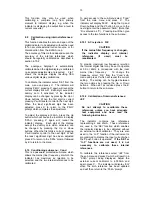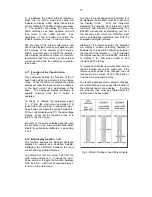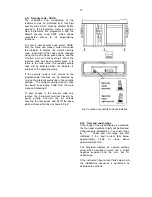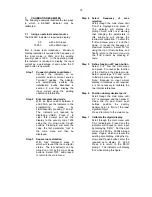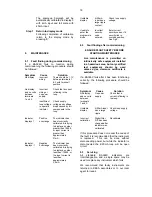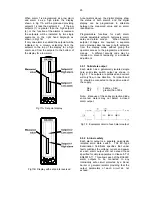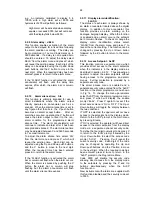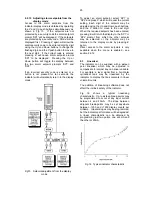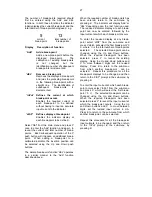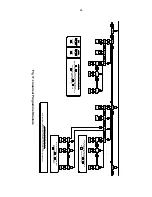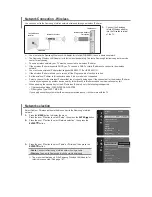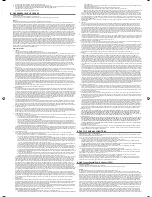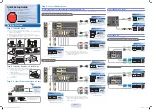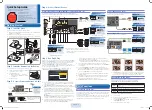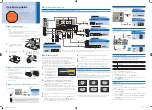
24
e.g. An indicator calibrated to display 0 to
10000, with a high alarm set at 9000 and
hysteresis of 200 will perform as follows:
High alarm will be activated when display
equals or exceeds 9000, but will not reset
until the display falls below 8800.
9.2.9 Alarm delay: dELA
This function enables activation of the alarm
output to be delayed for a fixed time following
the alarm condition occurring. The delay can
be programmed in 1 second increments up to
3600 seconds. If a delay is not required zero
should be entered. To adjust the delay select
'dELA' from the alarm menu and press
P
which
will reveal the existing delay. Each digit of the
delay can be adjusted using the
Up
and
Down
push buttons, and the
P
button to move to the
next digit. When the required delay has been
entered, press
E
to return to the alarm menu.
If the 'FLASH' function is activated the alarm
annunciator will flash until the delay time
expires, after which the alarm bar or column
will flash.
9.2.10
Alarm silence time: SIL
This function is primarily intended for use in
small installations where the alarm output
directly operates an annunciator such as a
sounder. When the alarm silence time is set to
any figure other than zero, the
P
push button
becomes an alarm accept button.
After an
alarm has occurred, operating the
P
button will
cause the alarm output to revert to the non-
alarm condition for the programmed alarm
silence time.
The alarm annunciator(s) will
continue to indicate an alarm after it has been
accepted and silenced. The alarm silence time
may be adjusted between 0 and 3600 seconds
in 1 second increments.
To adjust the alarm silence time select 'SIL'
from the alarm menu and press
P
which will
reveal the existing time. Each digit can be
adjusted using the
Up
and
Down
push buttons,
and the
P
button to move to the next digit.
When the required time has been entered
press
E
to return to the alarm menu.
If the 'FLASH' function is activated the alarm
bar or column will flash when the alarm occurs.
When the alarm is silenced by pushing the
P
button, the alarm bar or column will stop
flashing but the alarm annunciator will flash
until the alarm silence time expires.
9.2.11 Display alarm identification:
FLASH
The status of each alarm is always shown by
an alarm annunciator located above the digital
display. In addition to this annunciator, this
function provides an alarm warning on the
analogue bargraph display. When the function
is enabled and an alarm occurs, the setpoint
bar or column flashes. To check or change the
display alarm identification status select
'FLASH' from the alarm menu and press
P
to
reveal the current setting. The function can be
changed by pressing the
Up
or
Down
button
followed by the
E
button to return to the alarm
menu.
9.2.12 Access Setpoint: AcSP
This function controls a separate menu which
provides direct access to the alarm setpoints
when the indicator is in the display mode, as
described in section 9.2.13
Thus allowing an
operator to adjust the alarm setpoints without
having access to the programme and alarm
menus. Further protection is provided by a
separate security code.
This direct access menu is enabled and a
separate security code entered from the 'AcSP'
function in the alarm programme menu shown
in Fig 14. To change the menu parameters
select 'AcSP' from the alarm programme menu
and press
P
which will display the enable
prompt 'EnbL'. Press
P
again to reveal if the
direct access menu is 'On' or 'OFF'. The
Up
or
Down
buttons will toggle the display between
the two conditions.
If 'OFF' is selected, the operator will not have
access to the setpoints from the display mode.
Return to the 'AcSP' prompt in the main menu
by pressing
E
twice.
If 'On' is selected, the operator will have direct
access to the alarm setpoints from the display
mode via a separate optional security code.
To define the four digit numerical code press
P
to return to the 'Enbl' prompt followed by the
Up
or
Down
button to select the access code
prompt 'AcCd'.
Pressing
P
will reveal the
current security code. Each digit of the code
may be changed by operating the
Up
and
Down
push buttons, and the
P
button to move
to the next digit. When the required code has
been entered, press
E
twice to return to the
'AcSP' prompt in the Programme Menu.
Code 0000 will disable the security code
allowing direct access from the display mode
to the setpoints by pressing the
P
and
Up
buttons
simultaneously
when
the
AcSP
function is on.
New instruments with alarms are supplied with
this function disabled and the security code set
to 0000.
Содержание ba326c
Страница 11: ...11...




